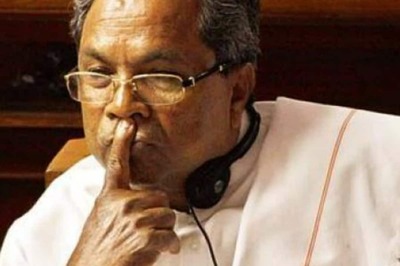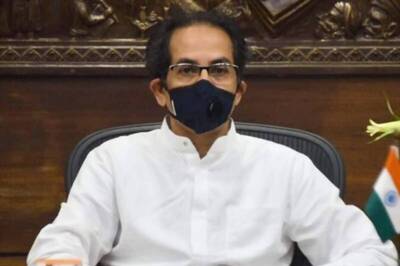
views
The G20 summit in Bali (Indonesia) concluded on a cheerful note for India, which assumed the group’s presidency for the first time on December 1. This has presented India with the unique opportunity to show global leadership and the true spirit of ‘vasudhaiva kutumbakam’, Sanskrit for “the world is one family”.
For a year now till November 30, 2023, India is expected to host close to 200 meetings at 55 different locations, including the holy heritage city of Amritsar. As part of the G20 summit, Punjab now has an opportunity to showcase its rich heritage and must explore the potential of its rural tourism while positioning itself as a major tourist destination.
In previous summits, host countries have showcased their unique food, culture and heritage as part of international diplomacy that transcends boundaries and barriers.
The robust Punjabis are renowned for their warmth and hospitality, and should strive to give an impetus to the region’s rich culture, craft and cuisine. Swaying mustard fields will welcome the world’s most powerful leaders, who represent 85 percent of the global gross domestic product (GDP), 75 percent global trade and 66 percent of the world population. This makes G20 a premier forum for international economic cooperation.
Among G20 members like the US, European Union and South Africa, rural tourism continues to be popular. The seeds of rural tourism were first sown by an Italian National Legal Framework passed in 1985. This law promotes overnight farm stays to diversify incomes of Italian farmers and supports the landscape of farming operations.
The Punjab potential
Punjab’s villages are rich in tradition and cultural heritage but, unfortunately, due to economic distress, the younger generation from these areas continues to move abroad in search for better opportunities. To overcome problems such as lack of social recognition and respect, inadequate farm income among others, the rural youth is not willing to take up agriculture as a profession.
Thus, the time has come for policymakers to successfully harness the potential of rural tourism, promotional activities and incentives for an agriculturist-entrepreneur to set up a functional farm for recreational purposes. It can be seen as an additional and sustainable source of income for the rural population.
Punjab has numerous heritage holy sites that need to be linked to rural tourism in all its three regions – Majha, Malwa and Doaba – defined culturally as well as geographically. In Majha, Sachkhand Sri Darbar Sahib at Amritsar witnesses the maximum number of tourists; Malwa region has Sri Muktsar Sahib and Sri Fatehgarh Sahib; in Doaba, Sri Anandpur Sahib and Sri Chamkaur Sahib lie between rivers Ravi, Beas, Satluj and Ghaggar. Farms across Punjab exemplify the simplicity, while Hari-ke-Pattan wetland and wildlife sanctuaries like Harike and Shivalik ranges are natural wonders.
Rural tourism can fuel rural economies through the multiplier effect and the acquired benefits will be shared within the farmer community. Further, development of rural tourism leads to profit margins for farm products and services, particularly for small farms in crisis. In rural tourism, there is a policy of employing local youth as guides and specifically contracts women for food preparation services through organised self-help groups.
Policy execution is missing
Punjab Heritage and Tourism Promotion Board (PHTPB) had initiated the Farm Tourism Scheme in 2013 to promote rural tourism and farms for homestay, but they are merely guidelines and did not scale up at large due to a lack of a rural tourism policy with a holistic approach. Out of a total of 13,006 villages, there are only 43 rural tourism sites registered with PHTPB while nine villages were chosen for the rural tourism cluster scheme by the central government.
This needs to be explored more thoroughly and developed as there is an imbalance in the distribution of these sites. Out of 43, 29 rural tourism sites are in the periphery of Chandigarh’s neighbouring districts – Mohali, Ropar, Patiala and Fatehgarh Sahib. On the other hand, there are 11 districts (half of Punjab) that do not have even a single rural tourism site.
What are the challenges?
For farmers, it is not only a brand new source of income but also much easier than planting and harvesting crops. The new income comes without the frustrations of irregular weather, volatile prices and fear of drought, pests and plant disease. There are, however, significant barriers due to lack of familiarity with tourist expectations.
The transition from traditional agriculture to rural tourism is quite a challenge for farmers. One major issue is successfully creating products and services for tourists. An increase in disposable income tied with shortened working days leads to a demand in leisure activities, which greatly contributes to the success of rural tourism.
What is the way ahead?
At least in all 148 blocks, PHTPB should create rural tourism clusters and do it in the community by using some panchayat funds to create lodging, food and safari for tourists. Policy and subsidies directly targeting rural tourism are important and equally necessary for the sound utilisation of local resources and the creation of essential services for tourists in a specific region to increase rural income. Thus, farmers can turn their farmlands into tourist destinations and open their doors to tourists to share more about what they do.
This innovative nature of resilient, sustainable, inclusive and responsible tourism is focused on safe mobility, crisis management, resilience, inclusiveness, green transformation, digital transition, investment and infrastructure in rural areas.
(The writer is vice-chairman of Sonalika Group, vice-chairman (cabinet minister rank) of Punjab Economic Policy and Planning Board, chairman of ASSOCHAM Northern Region Development Council. Views expressed are personal)
Read all the Latest Opinions here




















Comments
0 comment